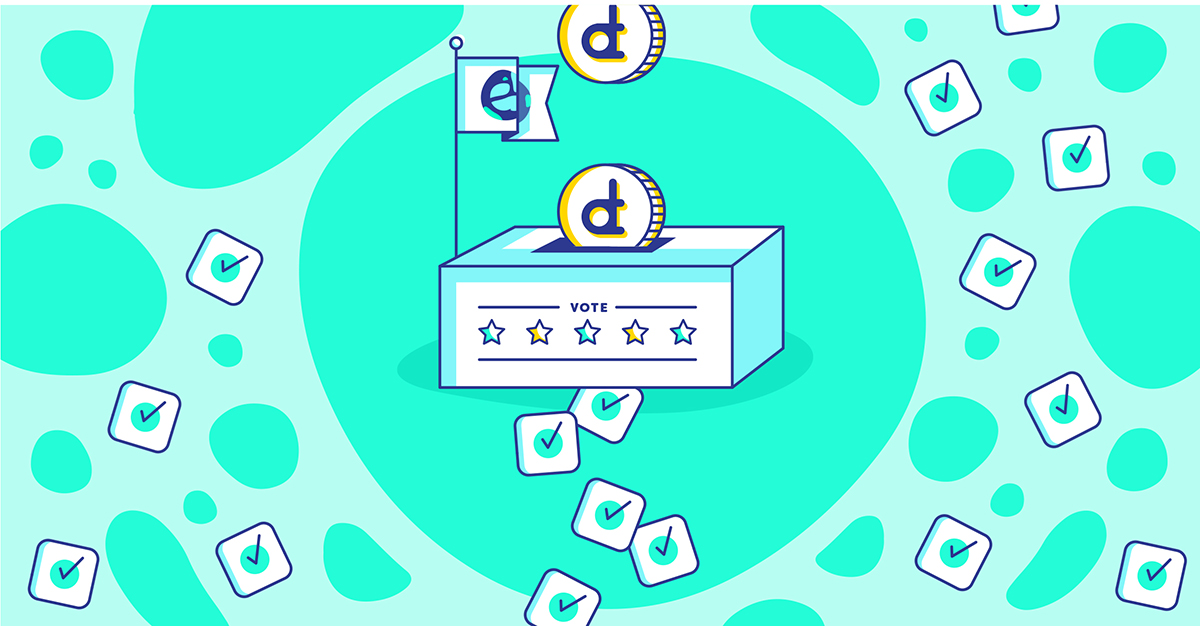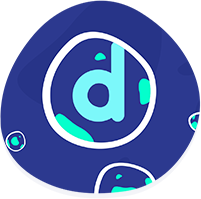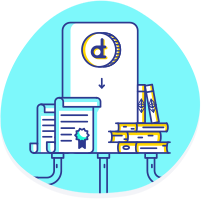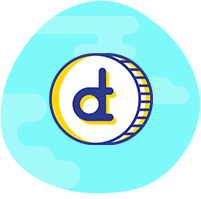
What Is DNT?
district0x tokens are signified in short form as “DNT”. These are classified as “ERC20 tokens”. By way of the DNT token, we’ve created a utility which provides a unit of account of representation or “vote share” in a particular marketplace’s public entity. DNT is used as a means of facilitating open participation and coordination on the network.
Let’s examine how the DNT token is used today, and will be used in the future.
What Is The DNT Token Used For?
The district0x Network Token is currently used signal what districts should be built and deployed by the district0x team. Since only a limited number of districts are currently deployed – DNT is currently used as a voting mechanism.
In the future, users will be able to stake DNT to a district and gain access to voting rights in any district on the district0x Network. Eventually there will be tons of districts on the network, so the DNT token will be vital to the operation and success of the network.

Token holders can stake any amount of their tokens into a district in order to receive governance rights. As a result, users can vote to make any proposed changes. This is called The Staking Interface.
How does the DNT Staking Interface work?
Users will be able to stake DNT to district and gain access to voting rights in any district on the district0x Network. Voting rights are utilized to come to a consensus on everything ranging from a district’s branding and design decisions, to what functionality is added to the district via auxiliary modules, to the appropriate settings for any adjustable parameters of these modules, to the means in which any fees are collected by a district, to how those fees are utilized and beyond.
Fees collected by a district can be used in any way the users on the network deem appropriate. Examples include development, marketing, growth, infrastructure improvements, and more. This gives motivation and incentive for the user to participate in the governance of the networks in which they use.
If it were voted that fees were to be collected from a network, in the case of Ethereum (and ERC20 tokens) – fees can accumulate to a public pool and disbursement of those fees can be dictated by a user-governed smart contract. This gives motivation and incentive for the user to participate in the governance of the networks in which they use.
Does voting mean I lose DNT?
No. district0x utilizes a token-based signaling mechanism where any address holding the district0x Network Token (DNT) can sign a transaction to the voting contract, thereby signaling the entire DNT balance held on that address towards their particular choice for any district proposal.

How do I manage my DNT?
It’s highly recommended that when entering the cryptosphere, you take cybersecurity more seriously. More resources on this will be available soon. DNT can be sent to, stored in, and sent from: Myetherwallet (aka MEW), Mist, Parity (via a Chrome extension) and a few other wallets.
You can also send DNT to your Ethereum wallet address: on your Ledger Nano S, your Trezor, in Metamask. However, in order to ‘interact’ with your DNT (ie. view balances, send these tokens etc) you will need to connect these wallets to MEW. Note: Always check the URL and make sure you see “MYETHERWALLET LLC [US]” there to ensure you are not connecting to a phishing site by mistake.
To interact with your DNT in Metamask
Step 1: log-in to the Metamask Chrome extension, bring up MEW in the same browser, click “View Wallet Info” and check “Metamask”.
Step 2: When your Metamask wallet appears in MEW, click “View Tokens”. When sending from here, toggle the button next to the send address pane from “ETH” to “DNT”. After sending (signing) the transaction on the MEW screen you will also need to sign the transaction in Metamask.
To interact with your DNT in Mist / My Ether Wallet (MEW)
Step 1: You’ll need to ‘watch’ the token. This requires clicking “Contracts”, “Watch Token”, and adding the token’s contract address which you can find via this link:
Step 2: Before sending DNT from a wallet, you require some Ether in the same wallet to cover the cost of gas required to fuel such transactions. A small amount like a 0.01 ETH should suffice. By setting the Gwei price to “1” I have managed to reduce such transactions to as little as a couple of cents. If the transaction fails, set the Gwei to a higher figure like 4; for faster transactions set it to 21.
Note: When receiving, storing, and sending DNT, these tokens will always remain separate from your Ether and any other ERC20 tokens held in the same Ethereum wallet.
Not all Ethereum wallets are token-enabled.
Jaxx’s(note: Jaxx is not recommended), for example, isn’t; instead they offer separate wallets for a number of other ERC20 tokens but are yet to add one for DNT so don’t send your tokens there. The same applies for Exodus.
Checking The Balance of DNT
You can check the balance of DNT in an Ethereum wallet by entering the address on https://etherscan.io and clicking “View Token Balance”.







